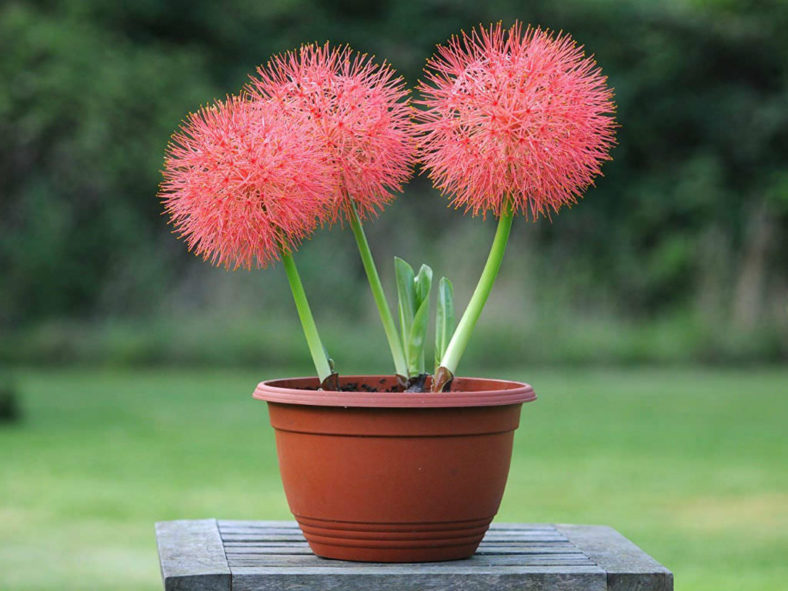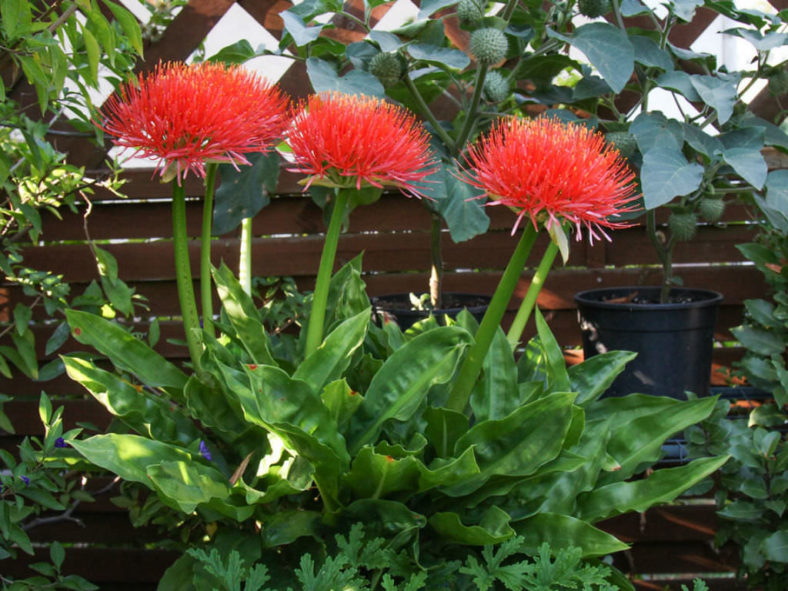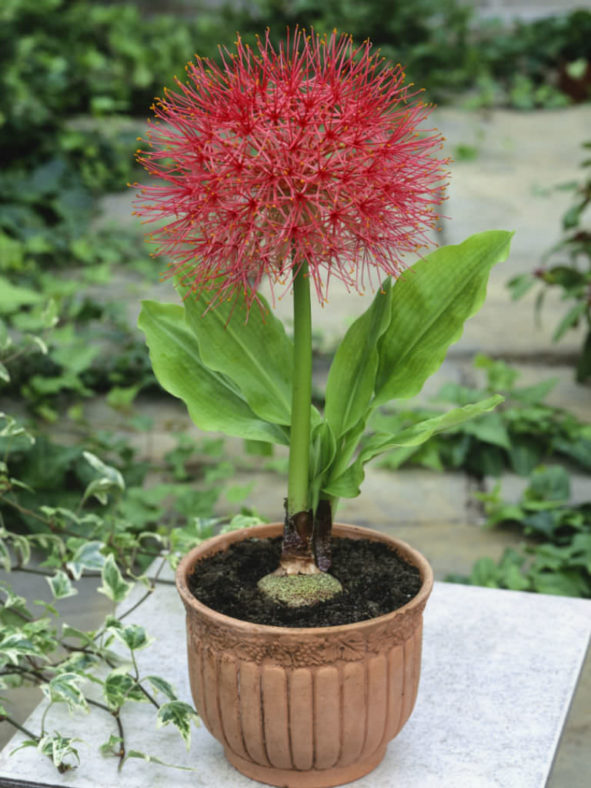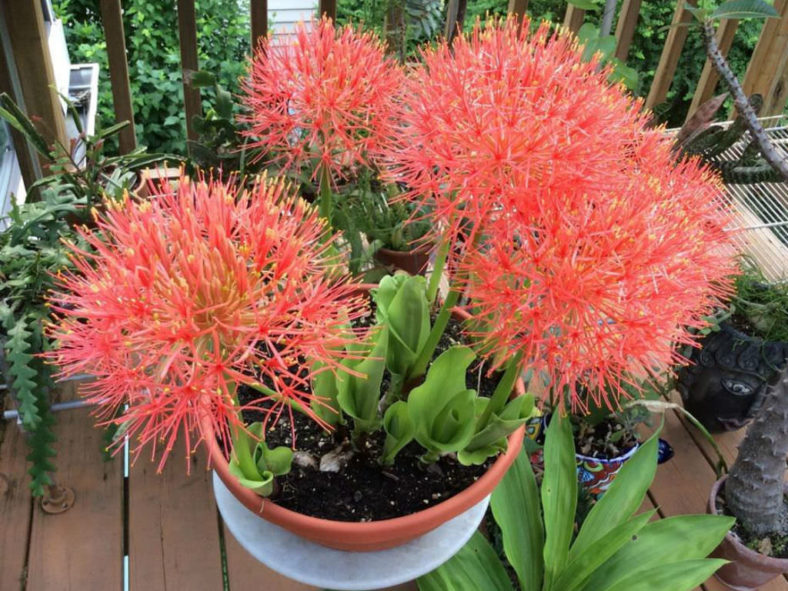Scientific Name
Scadoxus multiflorus (Martyn) Raf.
Common Name(s)
Blood Lily, Blood Flower, African Blood Lily, Fireball, Fireball Lily, Football Lily, Ball Lily, Low Lily, Monsoon Lily, Katherine-wheel, Oxtongue Lily, Poison Root, Pincushion Flower, Powderpuff Lily
Synonym(s)
Amaryllis multiflora, Haemanthus multiflorus, Haemanthus tenuiflorus, Nerissa multiflorus
Scientific Classification
Family: Amaryllidaceae
Subfamily: Amaryllidoideae
Genus: Scadoxus
Description
Scadoxus multiflorus is a popular geophyte that grows from a rhizomatous bulb and has semi-succulent, bright green leaves and a spectacular flower head. Each plant can produce 6 to 7 leaves and one flower head per season. The leaves and flowers may appear together, or the leaves may be produced later. The leaves can grow up to 15 inches (37.5 cm) long.
The flower head is a large spherical umbel of up to 100 flowers held at the end of a solitary stem.

Hardiness
USDA hardiness zones 9a to 11b: from 20 °F (−6.7 °C) to 45 °F (+7.2 °C).
How to Grow and Care
Blood Lily is very easy to maintain and doesn't require much attention. As long as it is not placed in extremely hot temperatures or in direct contact with the summer sun, it should be fine. An environment that provides partial shade will be perfect.
This plant loves the summer temperature, so put it out in the upper 60 °F (16 °C) or higher if possible. Understandably, these plants cannot tolerate and survive frost in winter-like conditions.
Put your Blood Lily in a pot with a good mixture of sand and rich potting soil. Since they are very hardy, regular repotting isn't necessary unless in emergencies.
It blooms in late summer or fall and seemingly lies dormant during the other times of the year. To keep it looking lovely, inspect the leaves occasionally and remove the withered ones.
Origin
Scadoxus multiflorus is native to most sub-Saharan Africa, from Senegal to Somalia to South Africa.
Links
- Back to genus Scadoxus
- Succupedia: Browse succulents by Scientific Name, Common Name, Genus, Family, USDA Hardiness Zone, Origin, or cacti by Genus
Photo Gallery
Click on a photo to see a larger version.



